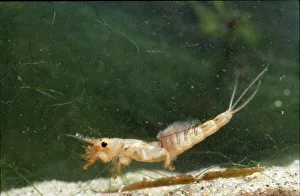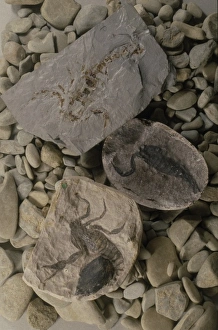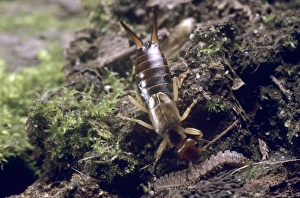Ladybirds And Lobsters Collection
"Ladybirds and Lobsters: A Fascinating Journey Through the World of Arthropods" In the intricate tapestry of nature
All Professionally Made to Order for Quick Shipping
"Ladybirds and Lobsters: A Fascinating Journey Through the World of Arthropods" In the intricate tapestry of nature, ladybirds and lobsters stand as captivating representatives of the diverse arthropod family. From ephemeral creatures like Ephemera danica, commonly known as mayfly larva, to ancient fossils such as Encrinurus punctatus trilobite C016/4927, each species tells a unique story. Delving into their world reveals astonishing wonders. The honeycomb created by Apis sp. Honeybees showcases their remarkable organizational skills and collective effort in building a perfect home for their colony. Meanwhile, Leonaspis coronata trilobite reminds us of an era long gone when these armored creatures roamed ancient oceans. Cyclophthalmus senior is another intriguing insect that catches our attention with its mesmerizing eyespots. Its vibrant colors serve as both camouflage and intimidation tactics against predators lurking nearby. Similarly, Dysdera crocata woodlouse spider displays its cunning hunting techniques while preying on unsuspecting woodlice. The enchanting beauty of Danaus plexippus monarch butterfly cannot be overlooked either - its delicate wings adorned with striking patterns make it a true marvel to behold. As we explore further into the depths of history, we encounter more remnants from the past; Encrinurus punctatus trilobites and Calymene blumenbachii trilobites offer glimpses into life millions of years ago. Venturing even deeper brings us face-to-face with Anomalocaris canadensis - an arthropod that once ruled primordial seas with its formidable size and predatory prowess. And let's not forget Waptia fieldensis - an enigmatic creature whose fossilized remains continue to puzzle scientists today. Lastly, we stumble upon a fossilized treasure: Acanthochirana cordata prawn frozen in time for eternity.




















